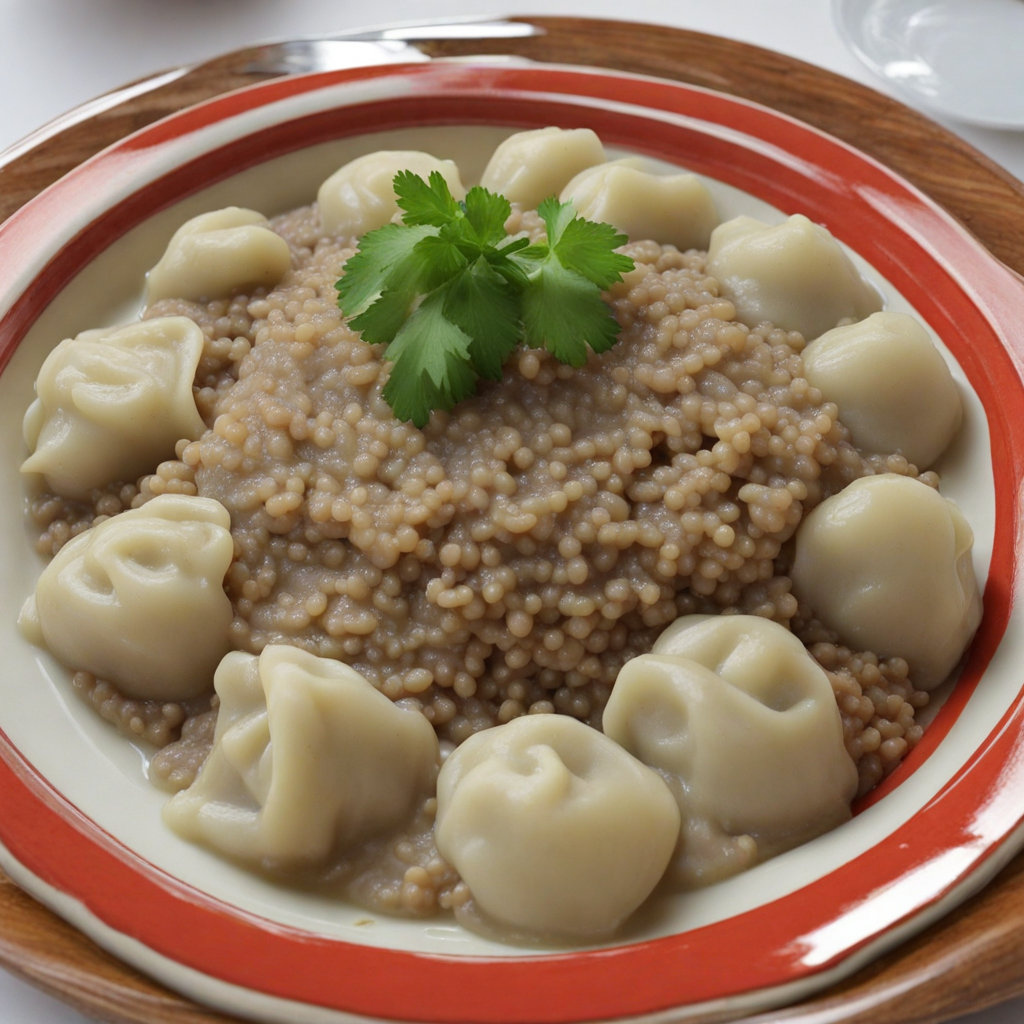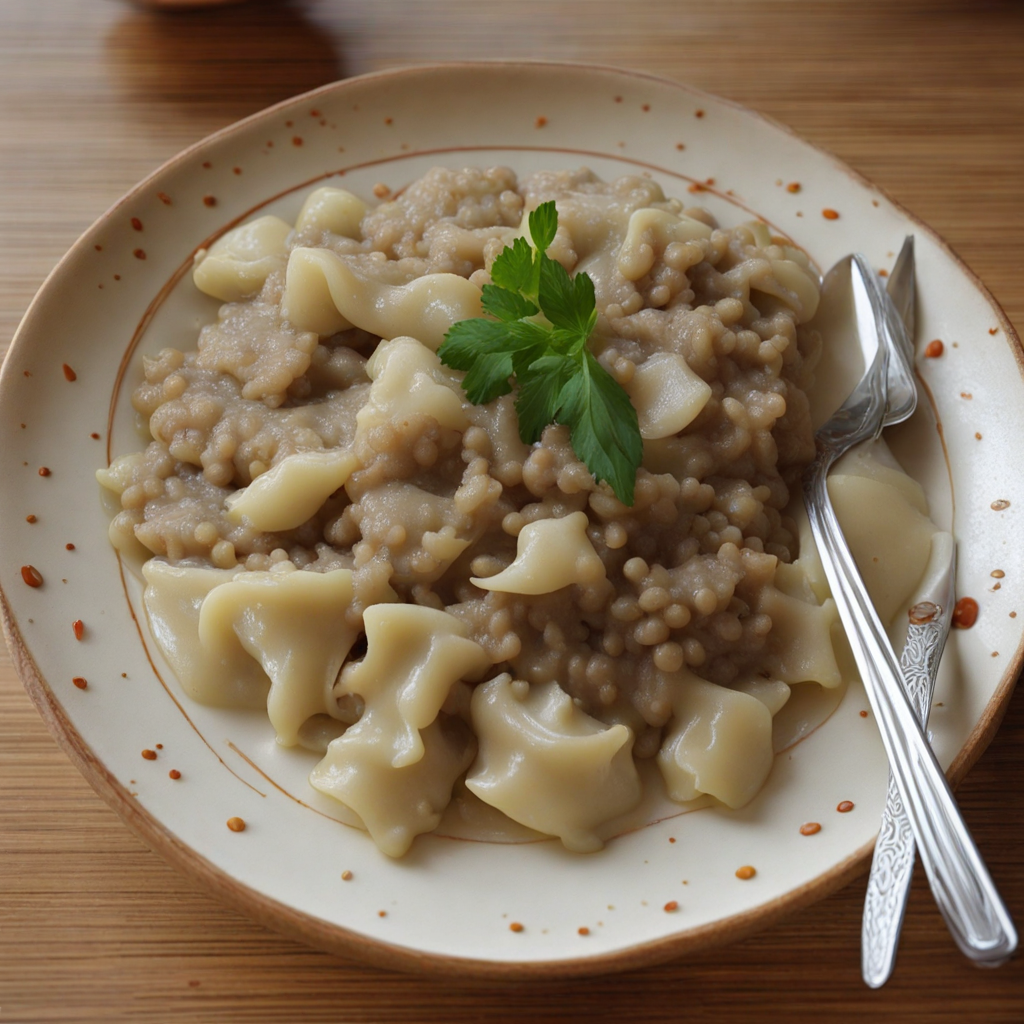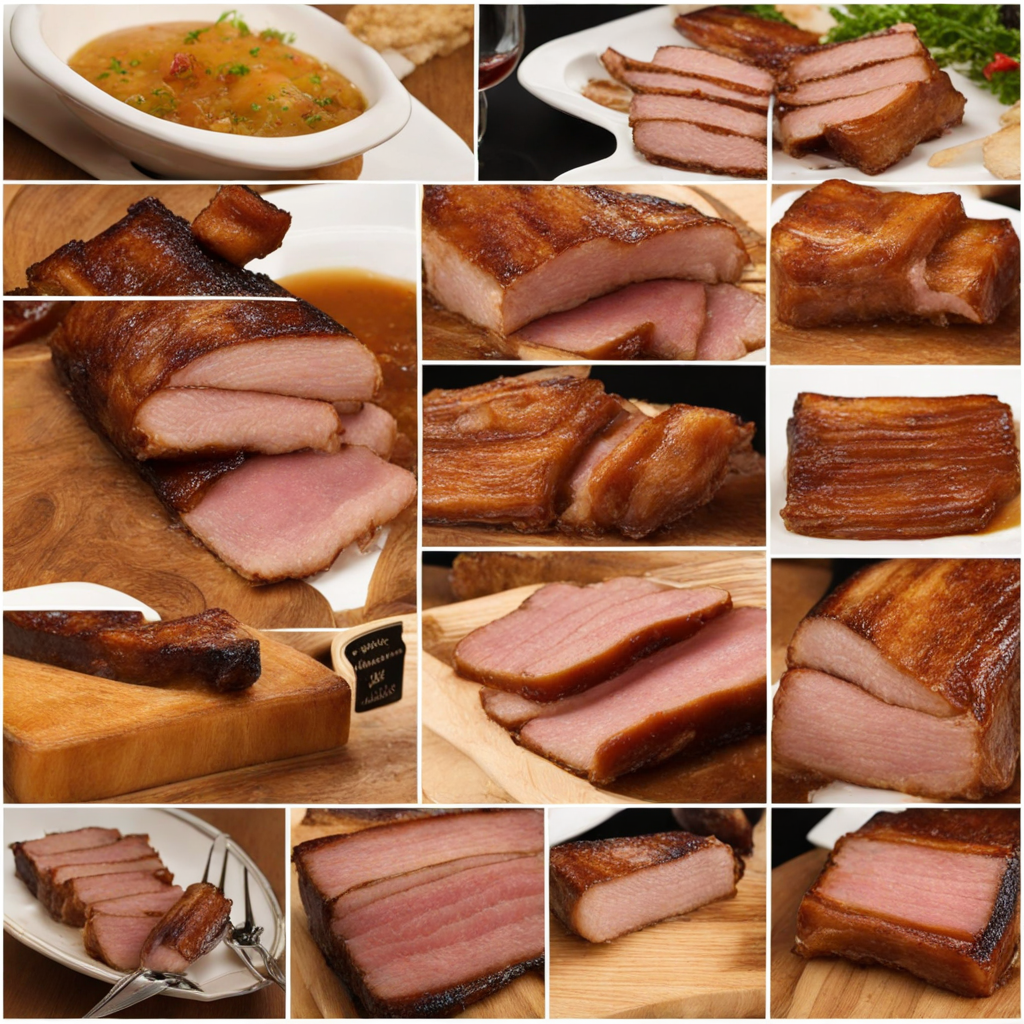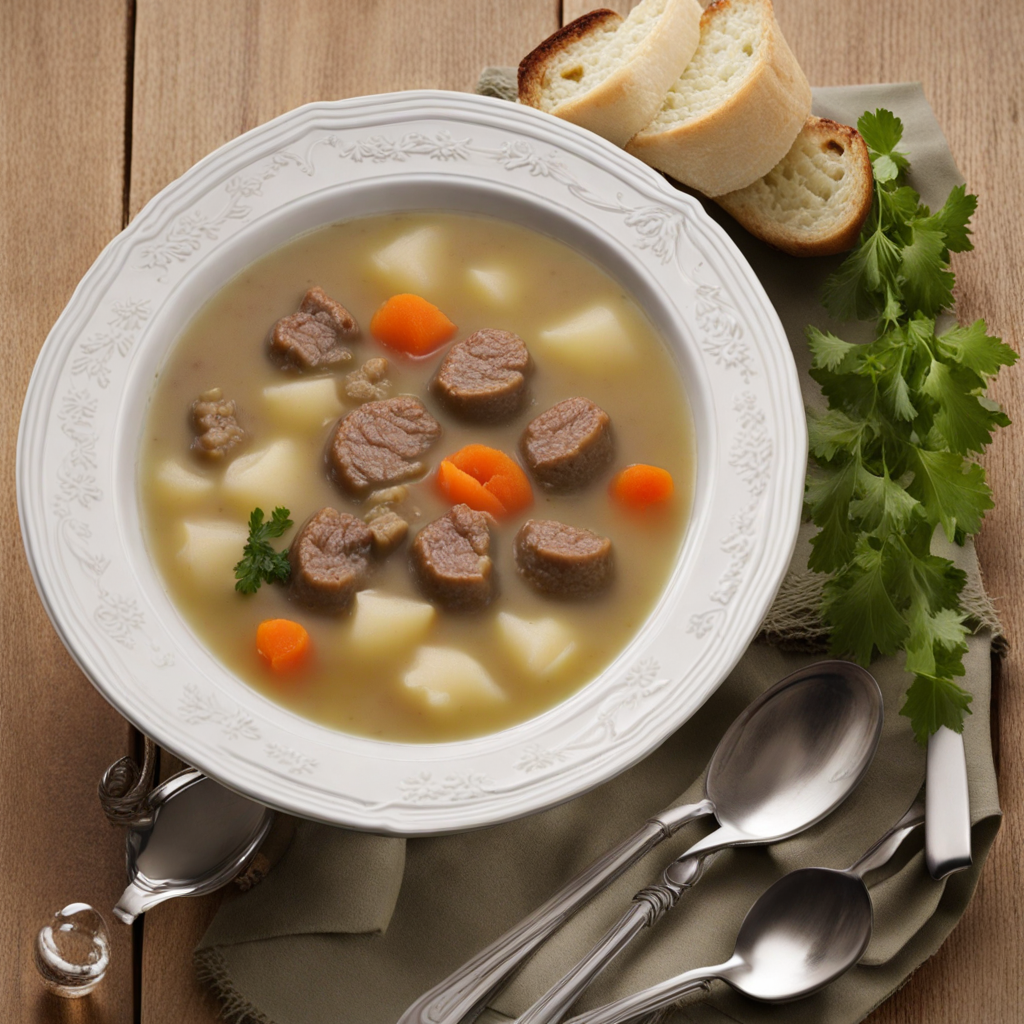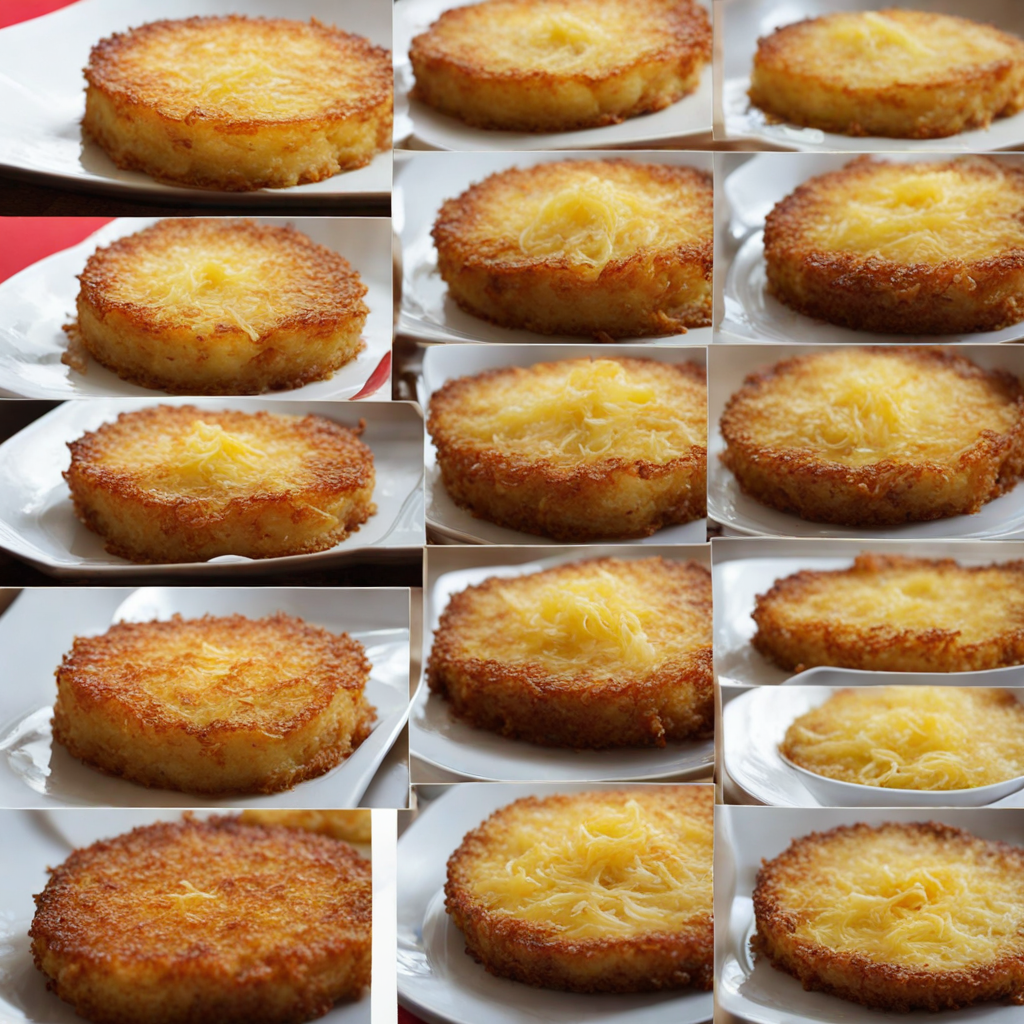Pizokel
Pizokel is a traditional dish hailing from Liechtenstein, steeped in the culinary history of the region. This rustic meal reflects the agricultural practices and local ingredients that have shaped Liechtenstein's cuisine over the centuries. Often associated with the mountainous terrain, Pizokel is a hearty dish that was originally prepared by farmers and laborers, providing them with the necessary sustenance for their demanding work in the fields and forests. The primary ingredients of Pizokel include flour, eggs, and water, which are combined to create a thick dough. In many traditional recipes, potato is also added to enhance the dish's heartiness and flavor. The dough is typically seasoned with salt and sometimes enriched with milk or cream, yielding a rich, dense texture. Once prepared, the dough is rolled out and cut into small, irregular shapes, resembling dumplings or noodles, which are then boiled in salted water until they float to the surface. The flavor profile of Pizokel is simple yet satisfying. The base of the dish is neutral, allowing for a variety of accompaniments that can elevate its taste. Traditionally, Pizokel is served with sautéed onions, bacon, or speck, which impart a savory depth. The crispy, caramelized onions add a sweetness that complements the dense dumpling-like structure. For those who prefer a vegetarian option, sautéed mushrooms or a medley of seasonal vegetables can also serve as delectable toppings. Additionally, a sprinkle of fresh
How It Became This Dish
Pizokel: A Culinary Journey Through Liechtenstein’s Heritage Nestled in the heart of the Alps, the tiny principality of Liechtenstein boasts a rich cultural tapestry woven from its history, geography, and the traditions of its people. Among the many culinary delights that this quaint nation offers, Pizokel stands out as a beloved dish that embodies both the simplicity and depth of Liechtensteinese cuisine. This dish, often seen as a comfort food, is steeped in local tradition and history, reflecting the way of life in this small Alpine country. Origins of Pizokel Pizokel has its roots in the rustic, peasant cooking of the Alpine regions. The dish is primarily made from a simple combination of flour, eggs, and water, resulting in a thick noodle or dumpling-like consistency. Historically, Pizokel may have been a means to utilize staple ingredients that were readily available to farmers and laborers in the region, especially during times of hardship when food scarcity was common. The name “Pizokel” is believed to derive from the Romansh word “piz,” which means “to pinch,” a nod to the way the dough is shaped before cooking. This illustrates the communal nature of the dish’s preparation, often made in large quantities to feed families or groups of workers. The dish's humble origins can also be traced back to the broader culinary practices of the surrounding Alpine countries, such as Switzerland and Austria, where similar dumpling-like foods are prevalent. Cultural Significance Pizokel is more than just a dish; it is a vital part of Liechtenstein’s cultural identity. Traditionally served during festive occasions and gatherings, it has become a symbol of hospitality and community. Families often come together to prepare Pizokel, sharing stories and laughter as they knead the dough and pinch off pieces to form the dumplings. This communal process highlights the importance of family and unity in Liechtensteinese culture. In Liechtenstein, food is deeply intertwined with tradition and celebration. Pizokel is commonly served during holidays and family celebrations, often accompanied by hearty stews or sauces. It can be paired with various meats, such as beef or pork, and is sometimes enriched with seasonal vegetables, reflecting the agricultural bounty of the region. Moreover, Pizokel has found a place in the culinary repertoire of Liechtenstein’s restaurants, where chefs elevate this rustic dish to new heights, infusing it with modern culinary techniques while retaining its traditional essence. The Development Over Time The evolution of Pizokel mirrors the wider changes in Liechtenstein’s society and economy. In the early 20th century, as agricultural practices modernized and urbanization began to take root, the ways in which traditional foods were prepared and consumed also shifted. The availability of new ingredients and cooking tools transformed Pizokel from a strictly homemade dish into one that could be enjoyed in restaurants and during more formal occasions. In the post-World War II era, as Liechtenstein experienced economic growth and increased tourism, Pizokel began to gain recognition outside its borders. The dish became a staple in local restaurants catering to both residents and visitors eager to sample authentic Liechtensteinese cuisine. As travel became more accessible and the world began to embrace the idea of culinary tourism, Pizokel found its way onto international menus, promoting the unique flavors of this Alpine nation. Modern interpretations of Pizokel have also emerged, with chefs experimenting with different flours, such as whole wheat or spelt, and incorporating a variety of herbs and spices to enhance the flavor profile. While the traditional recipe remains cherished and is often passed down through generations, these contemporary variations showcase the adaptability of the dish and its ability to resonate with new generations of food lovers. Pizokel Today: A Culinary Icon In today’s culinary landscape, Pizokel has firmly established itself as a symbol of Liechtensteinese heritage. Its presence at local festivals, markets, and restaurants reflects not only a love for traditional foods but also a commitment to preserving cultural identity in an increasingly globalized world. The annual “National Day” celebrations in Liechtenstein often feature Pizokel as part of the festivities, emphasizing its role in national pride and community cohesion. Furthermore, the rise of the farm-to-table movement has rekindled interest in local ingredients and traditional cooking methods, providing Pizokel with a renewed sense of relevance. Chefs and home cooks alike are now seeking to highlight the importance of sourcing local produce and grains, ensuring that the dish remains connected to the land from which it originates. Pizokel is also reflective of the growing trend towards sustainability in modern cuisine. With its simple, wholesome ingredients, the dish promotes a mindful approach to food, encouraging people to appreciate the flavors of the region while acknowledging the history behind each ingredient. This sustainability ethos resonates particularly well with younger generations who are increasingly conscious of the environmental impact of their food choices. Conclusion Pizokel stands as a testament to the rich culinary heritage of Liechtenstein. Its evolution from humble peasant food to a cherished national dish encapsulates the spirit of the Liechtensteinese people—a spirit grounded in community, tradition, and resilience. As the world continues to change, Pizokel remains a beloved staple, embodying the values of its origin while adapting to contemporary tastes and preferences. In sharing a plate of Pizokel, one is not only savoring a delicious dish but also partaking in a centuries-old tradition that celebrates the heart and soul of Liechtenstein. Whether enjoyed in a cozy mountain chalet, at a festive gathering, or in an upscale restaurant, Pizokel continues to bring people together, bridging the past with the present and future of Liechtenstein’s culinary landscape.
You may like
Discover local flavors from Liechtenstein


